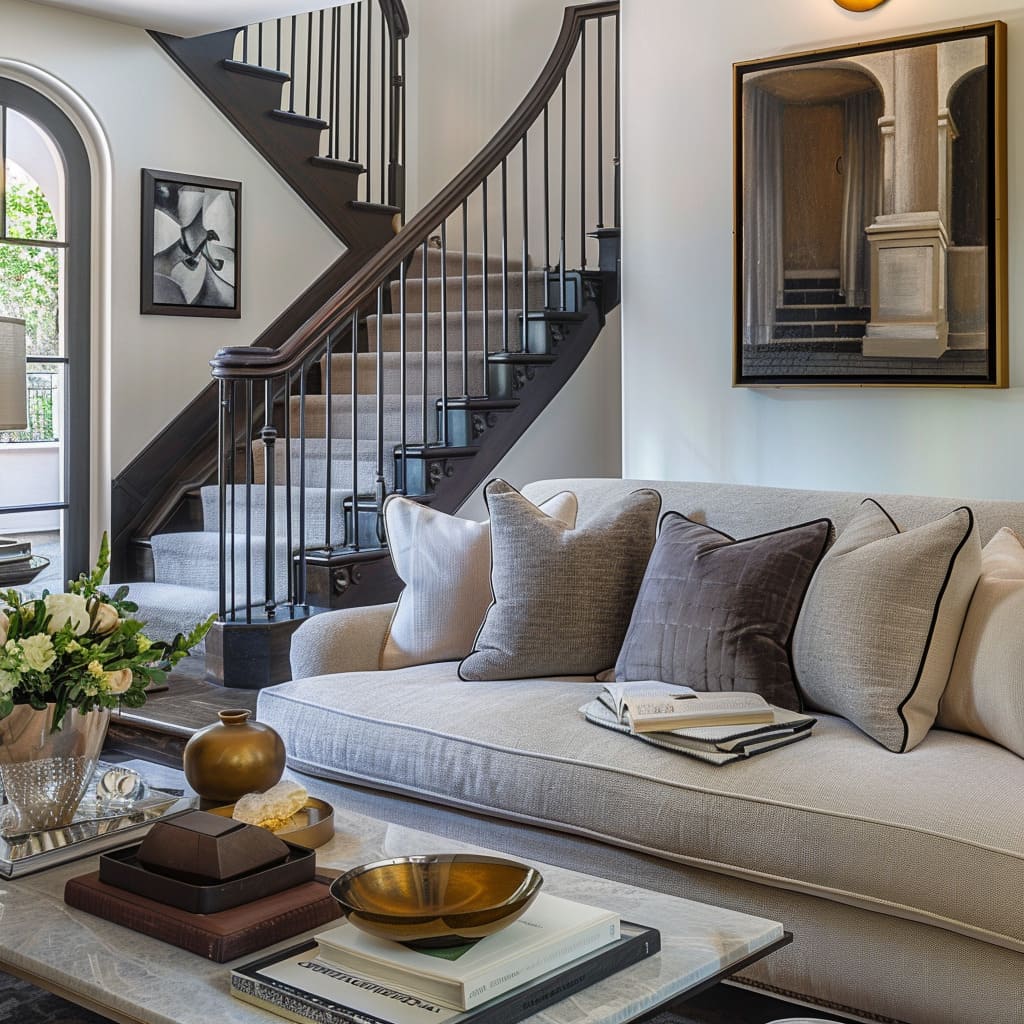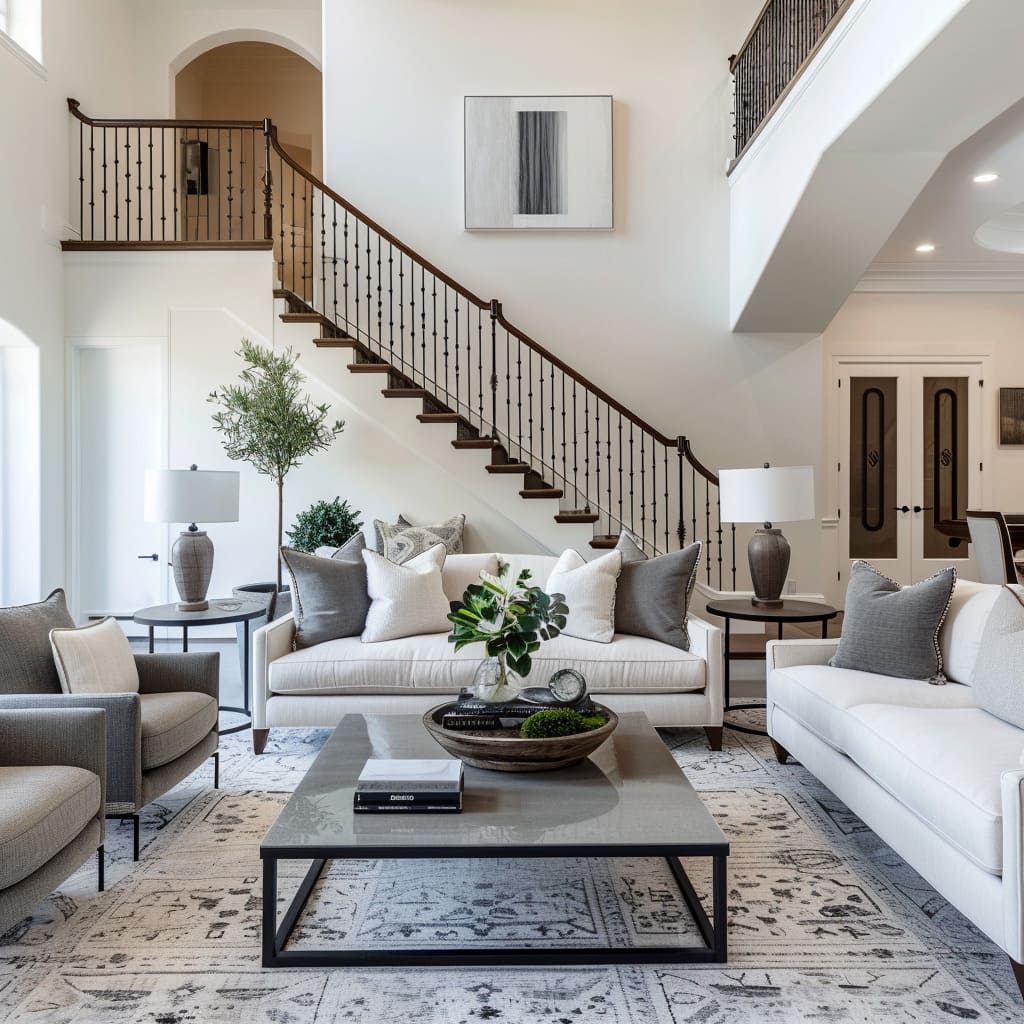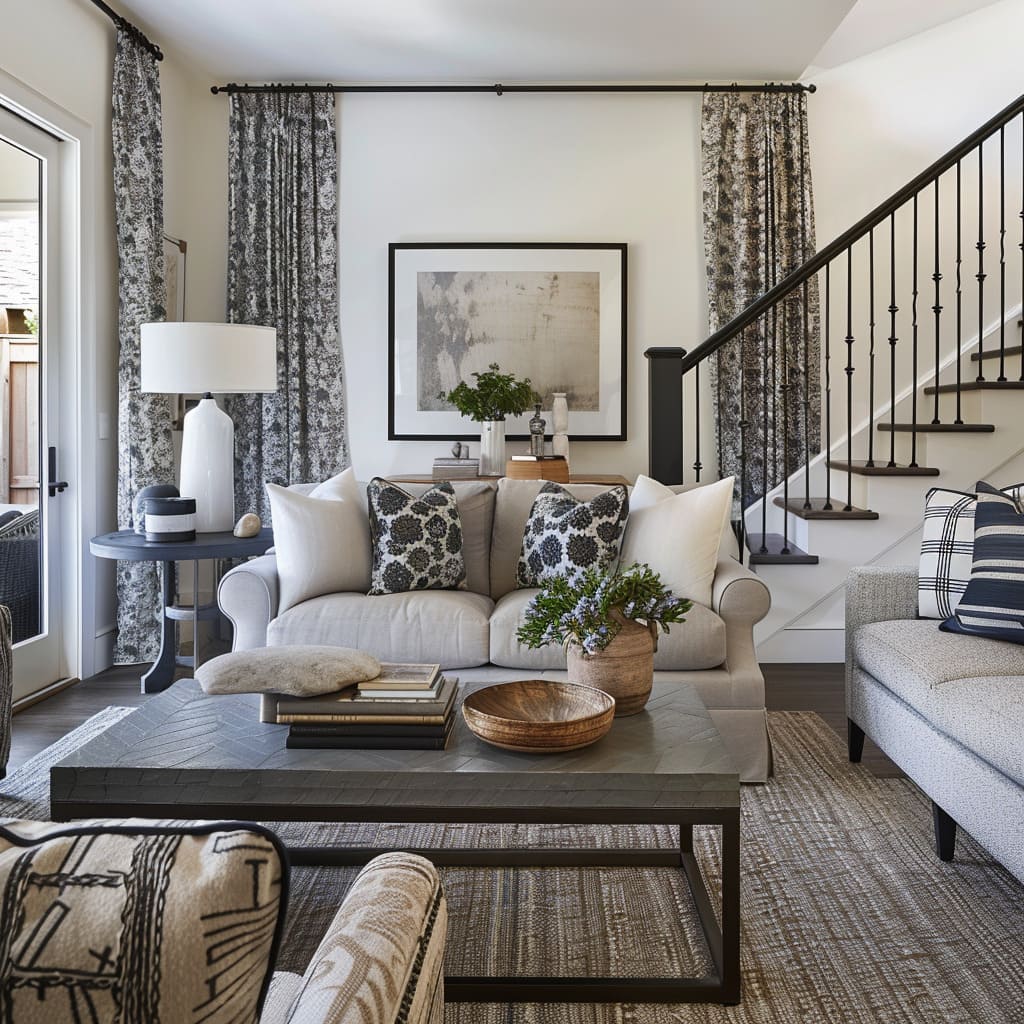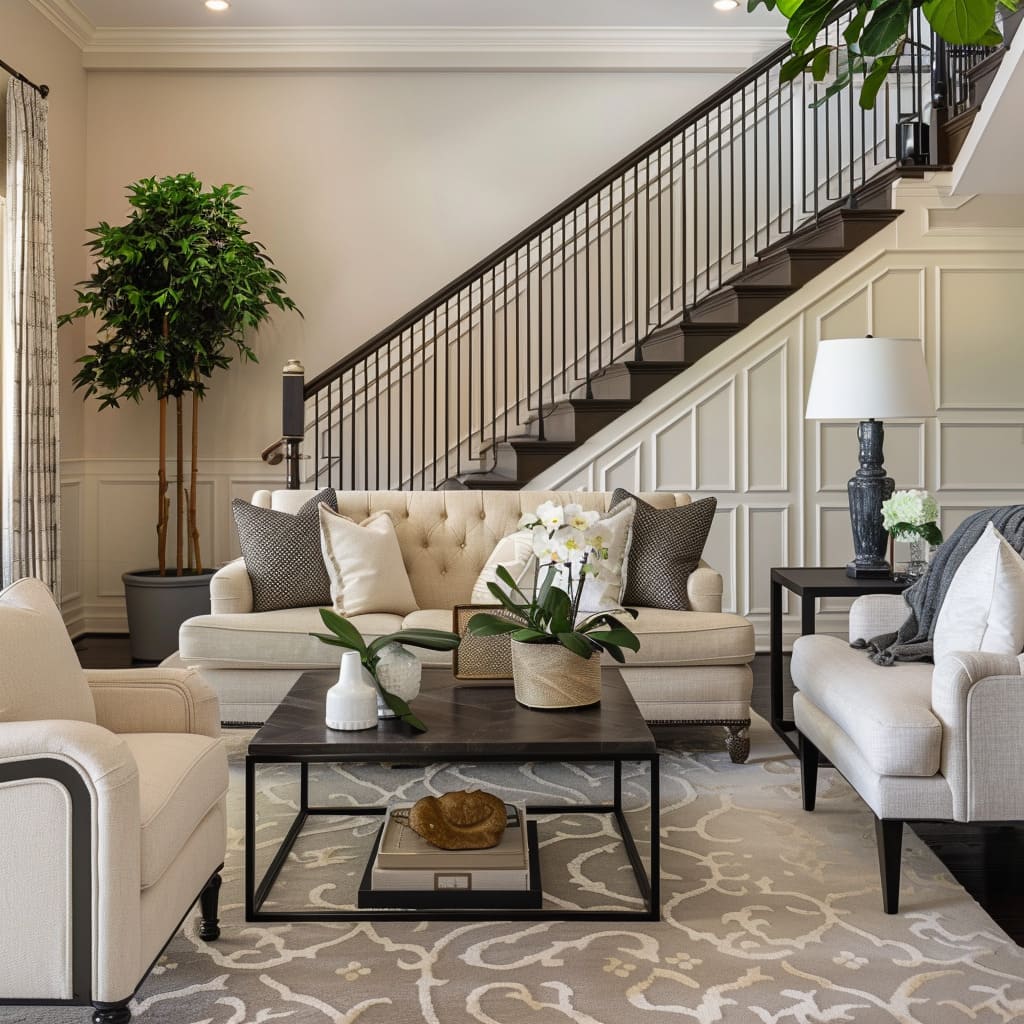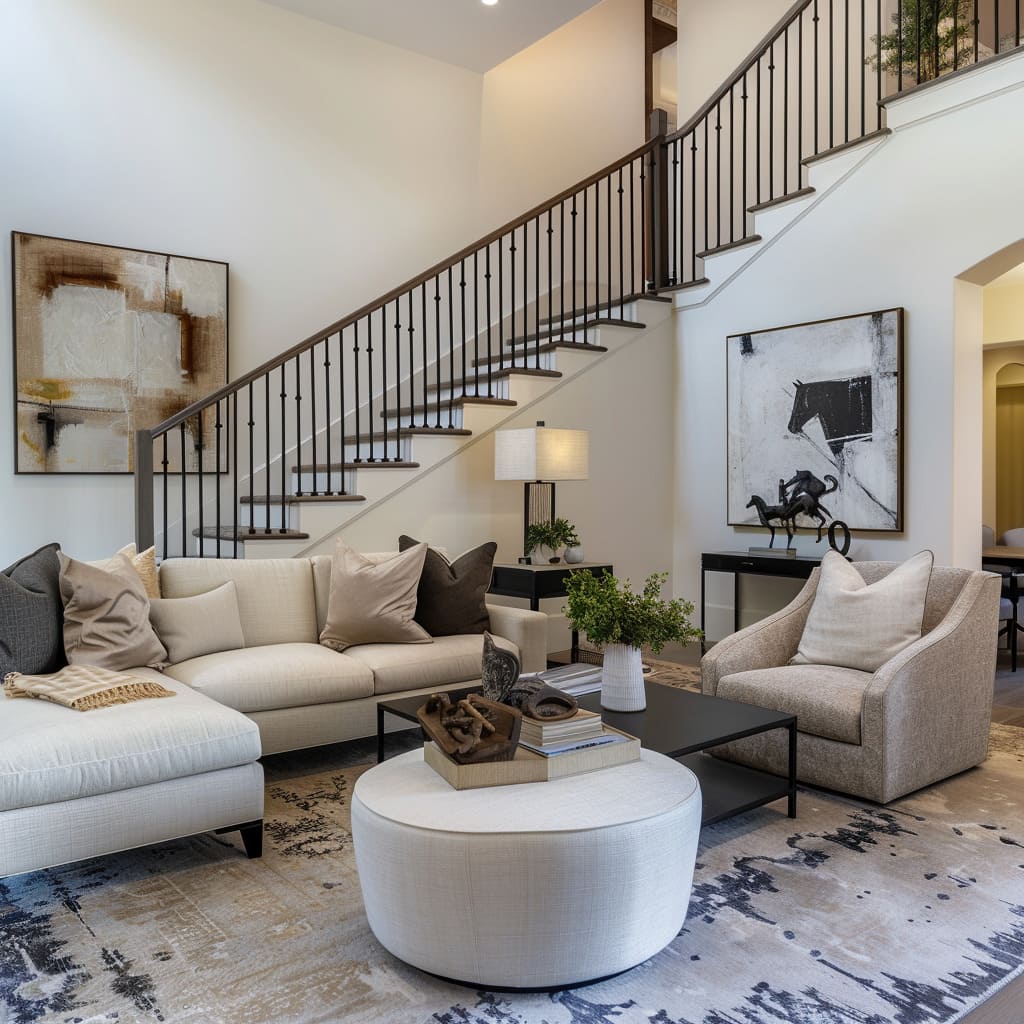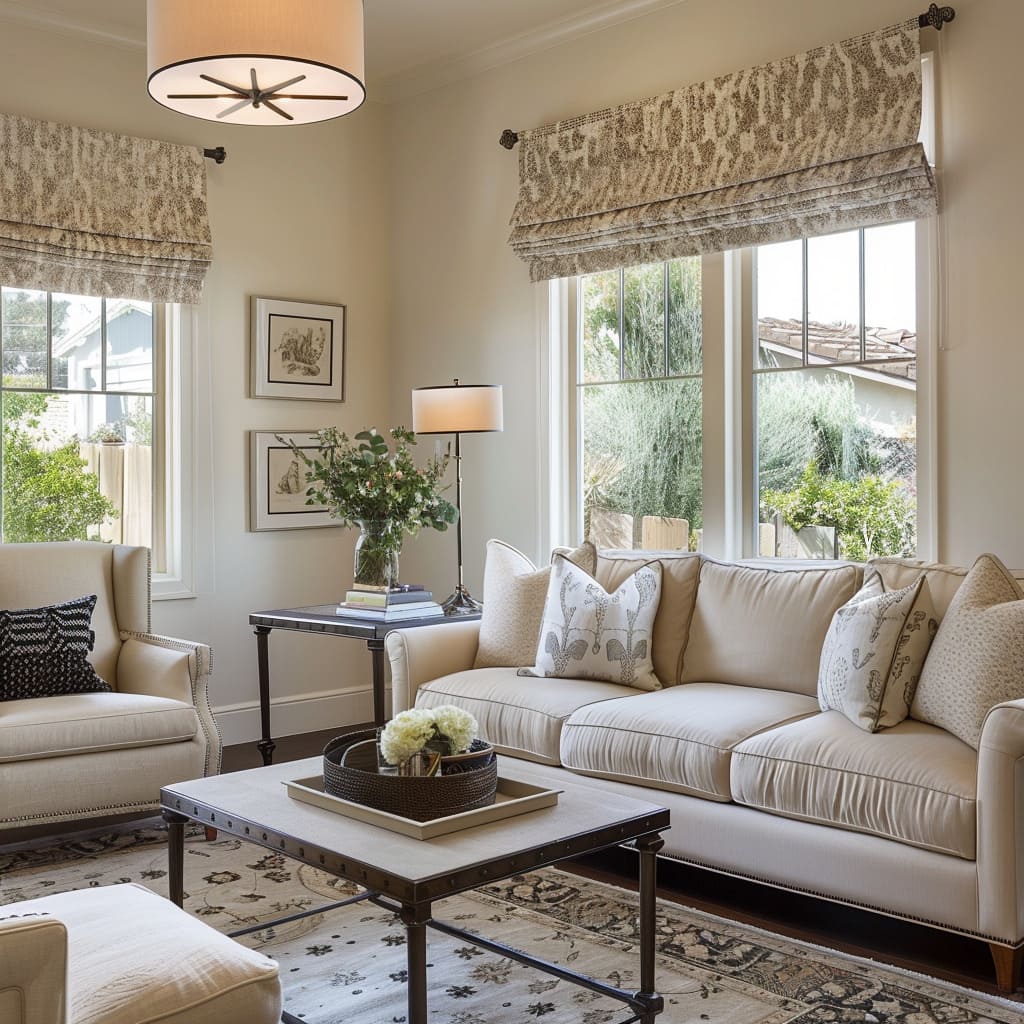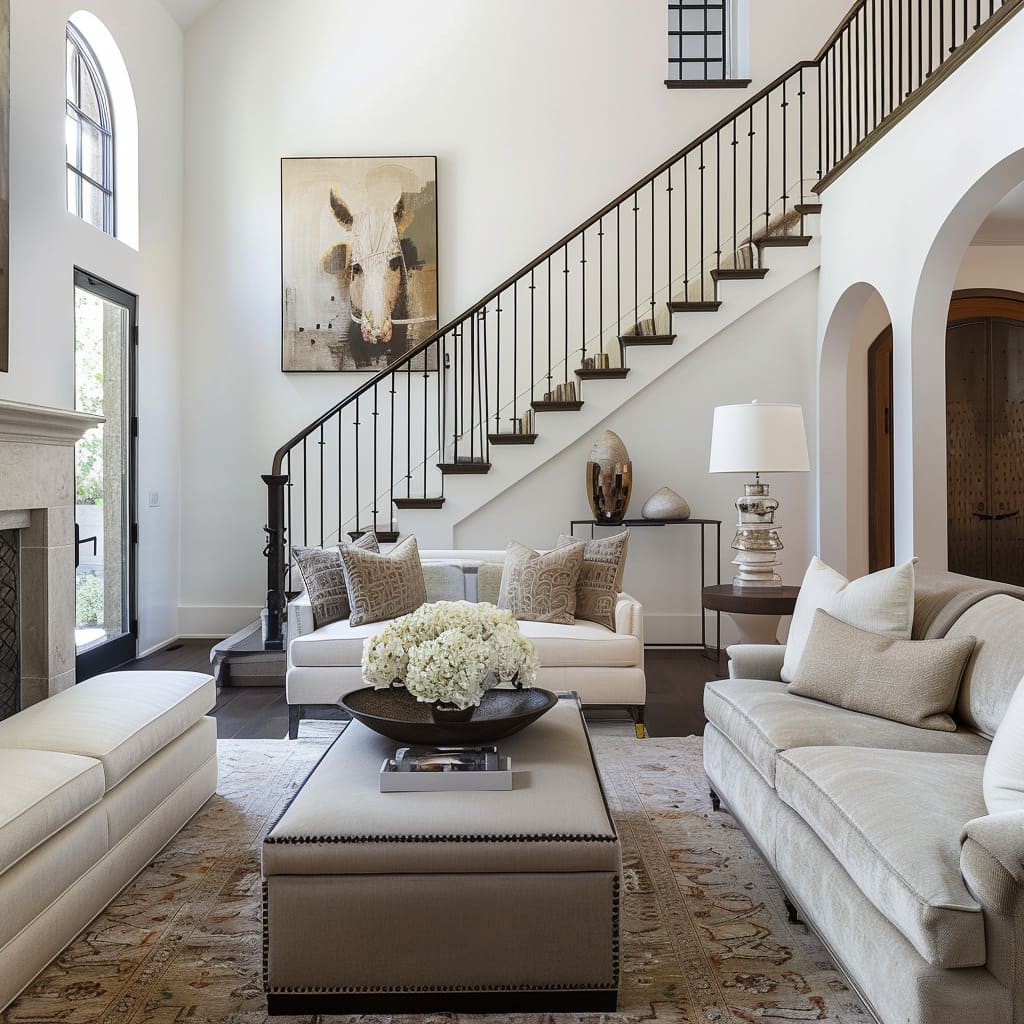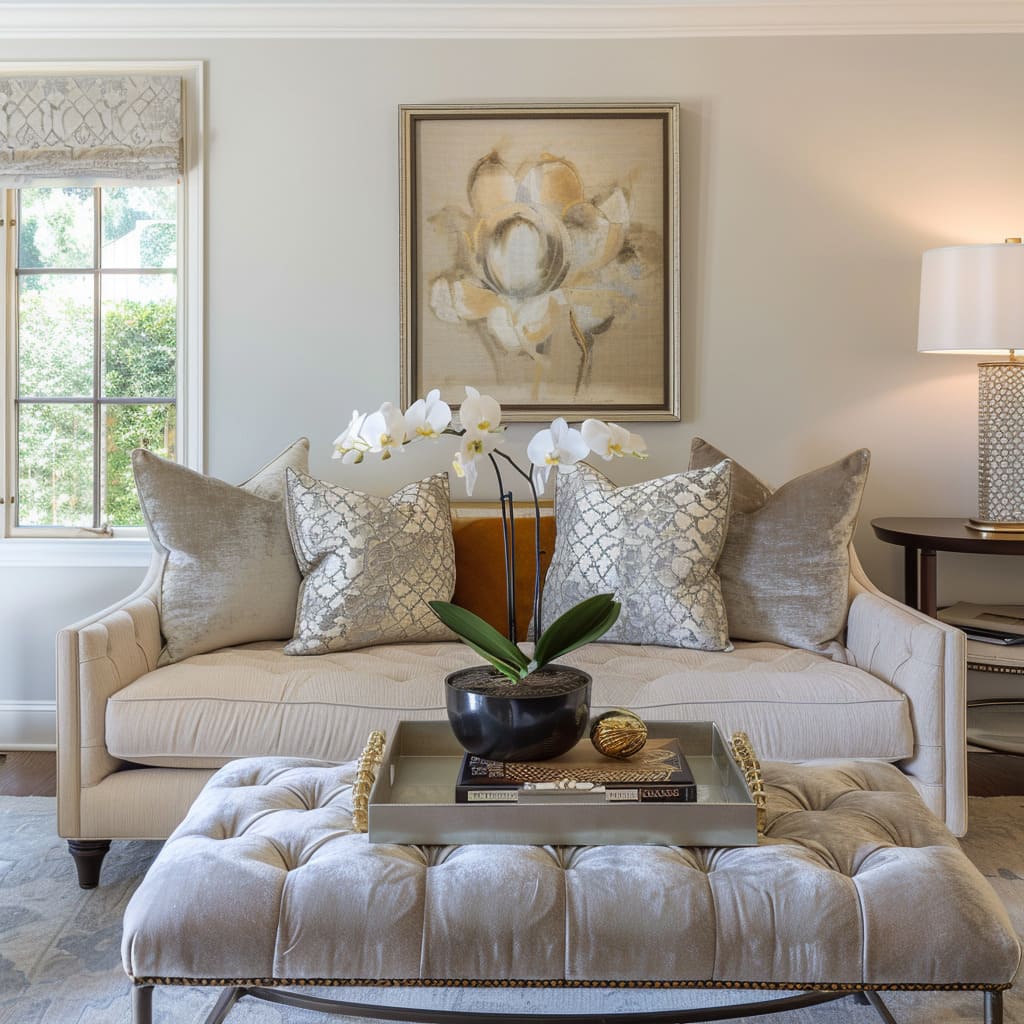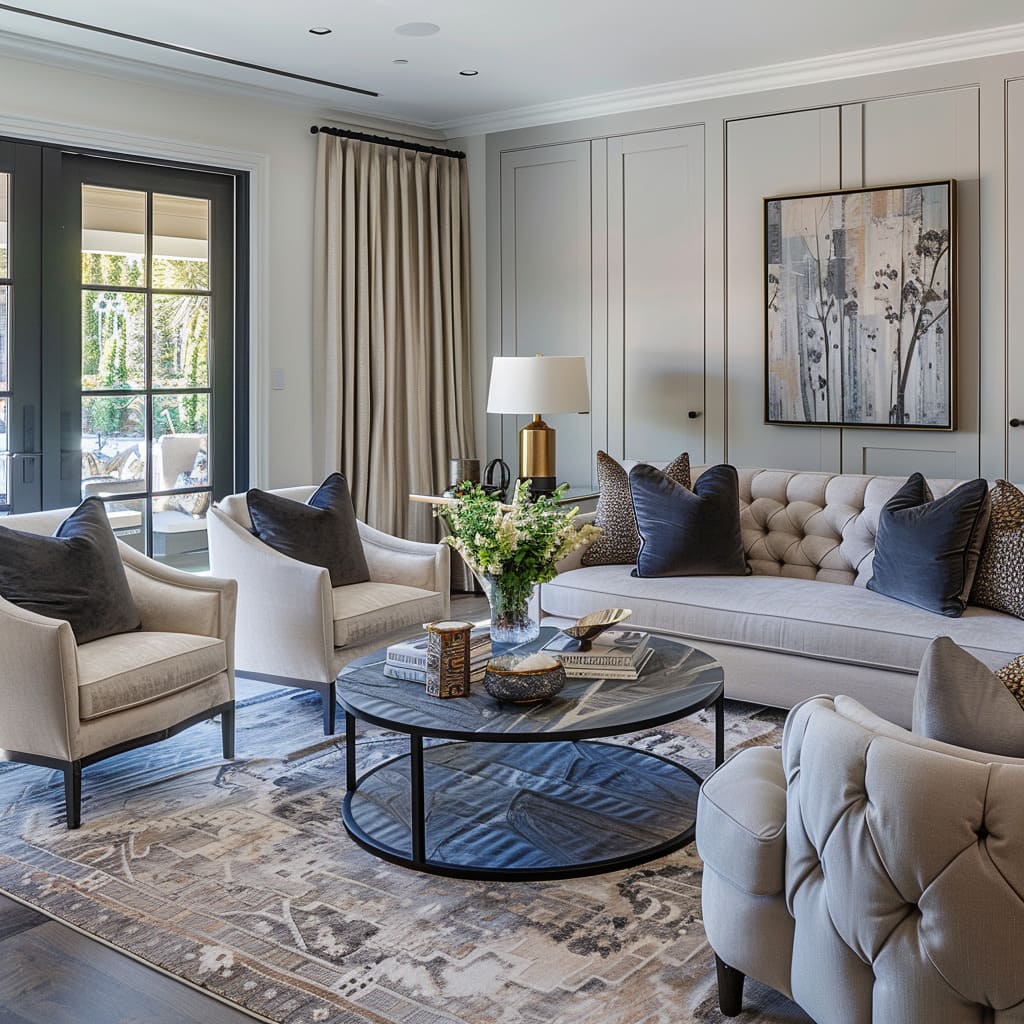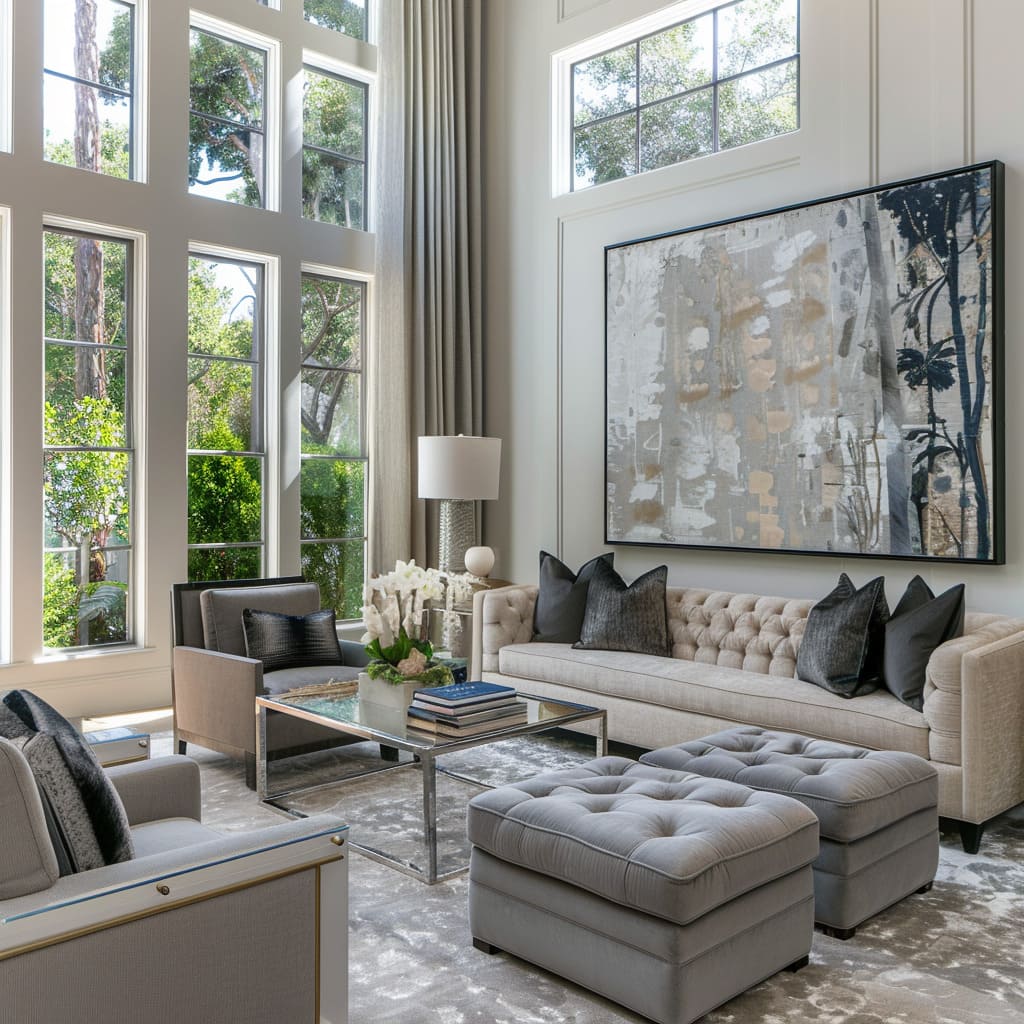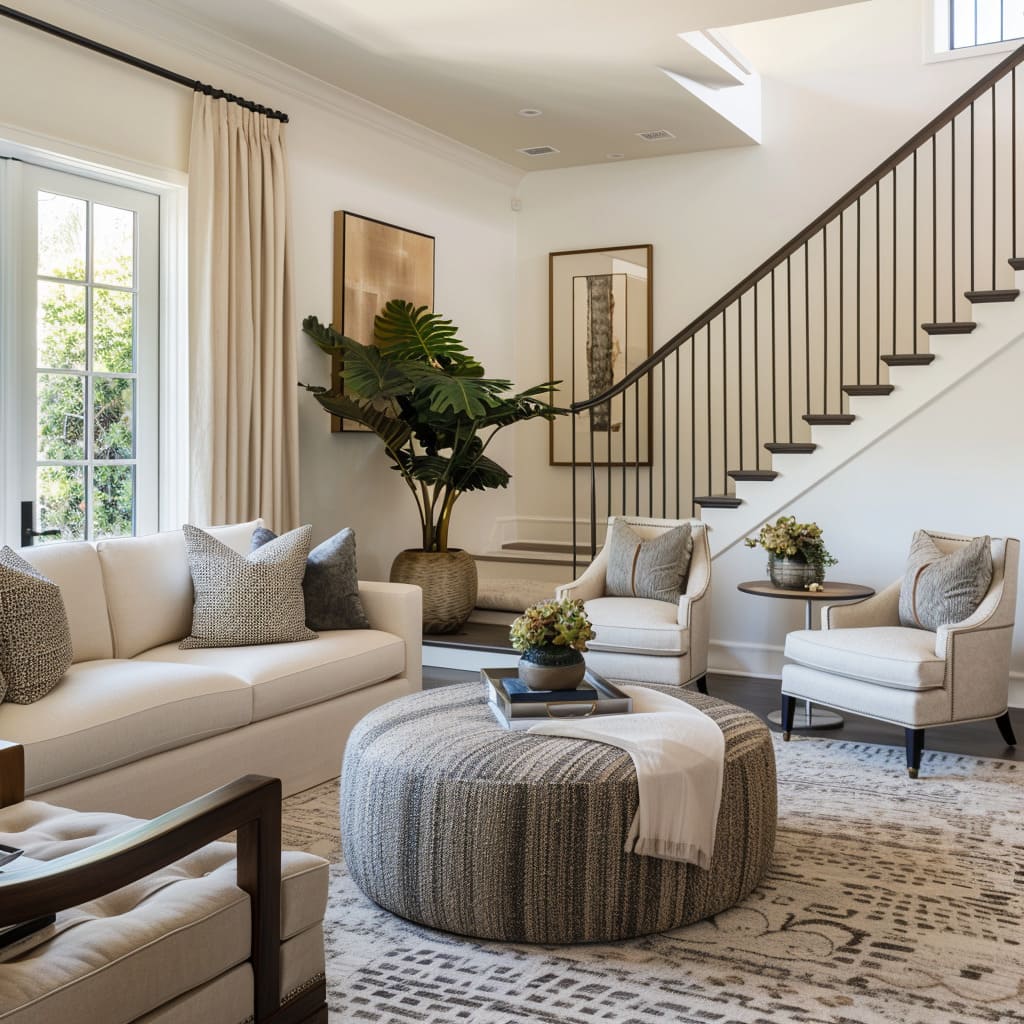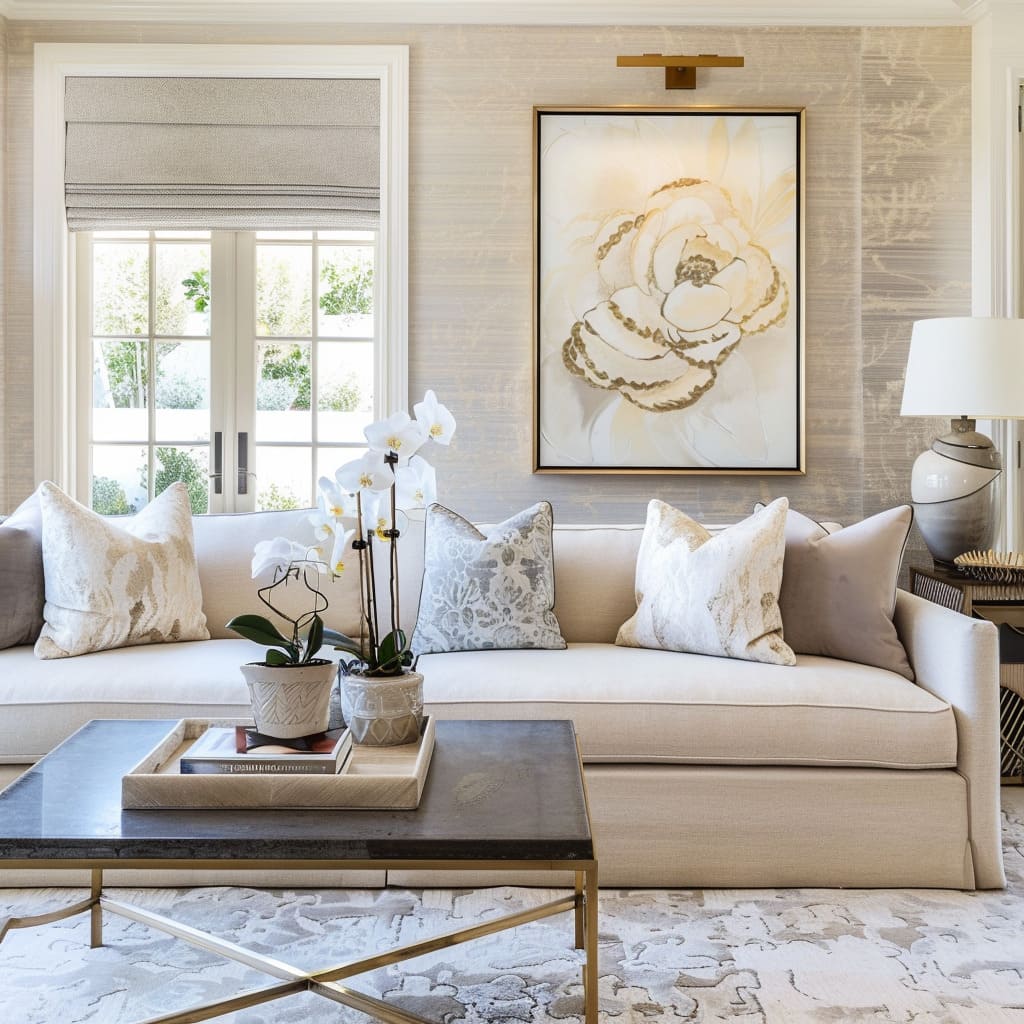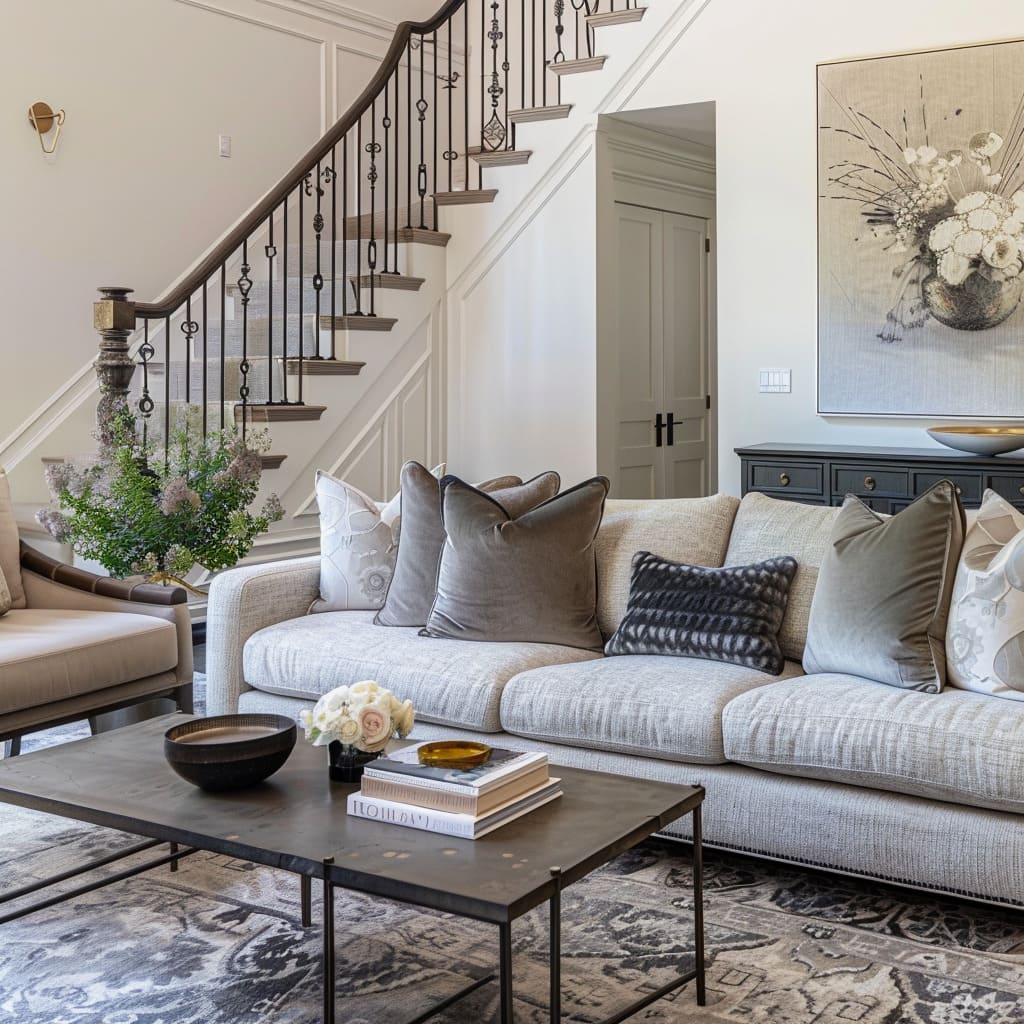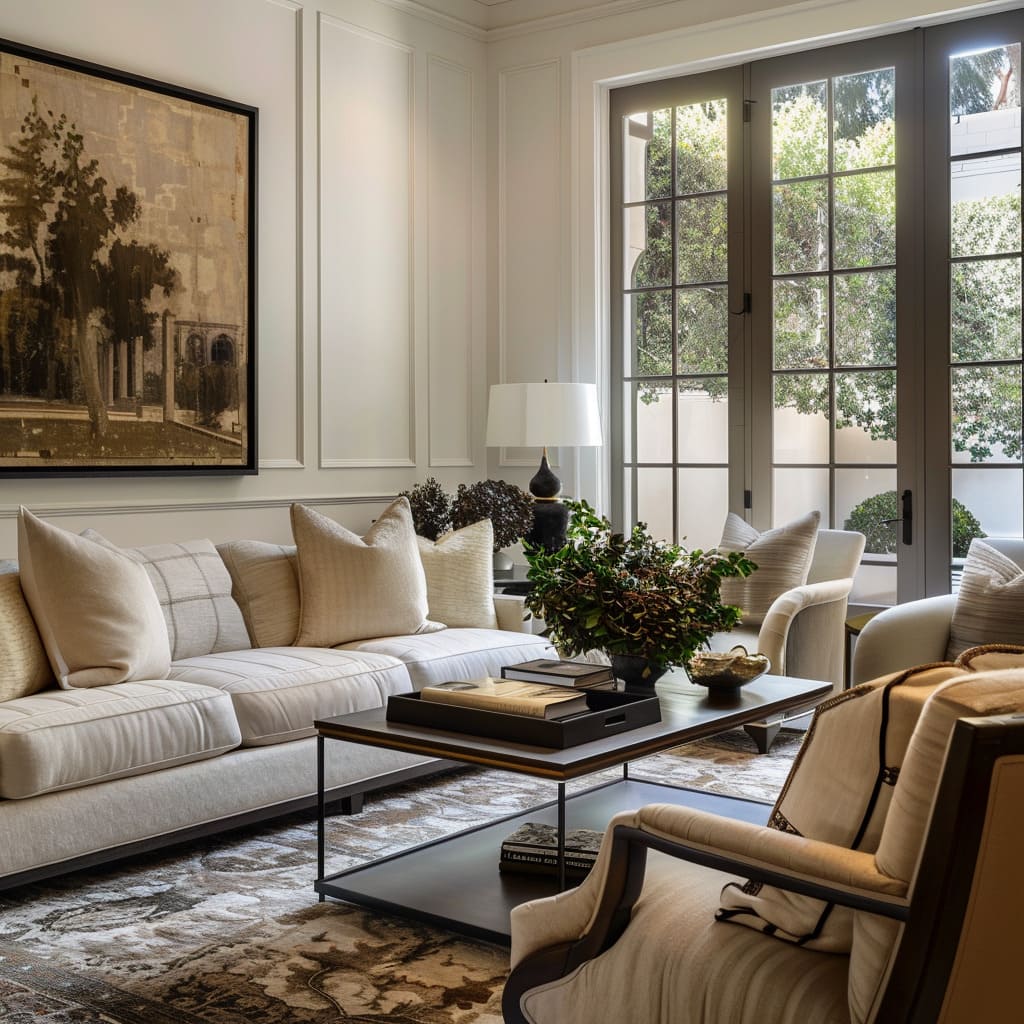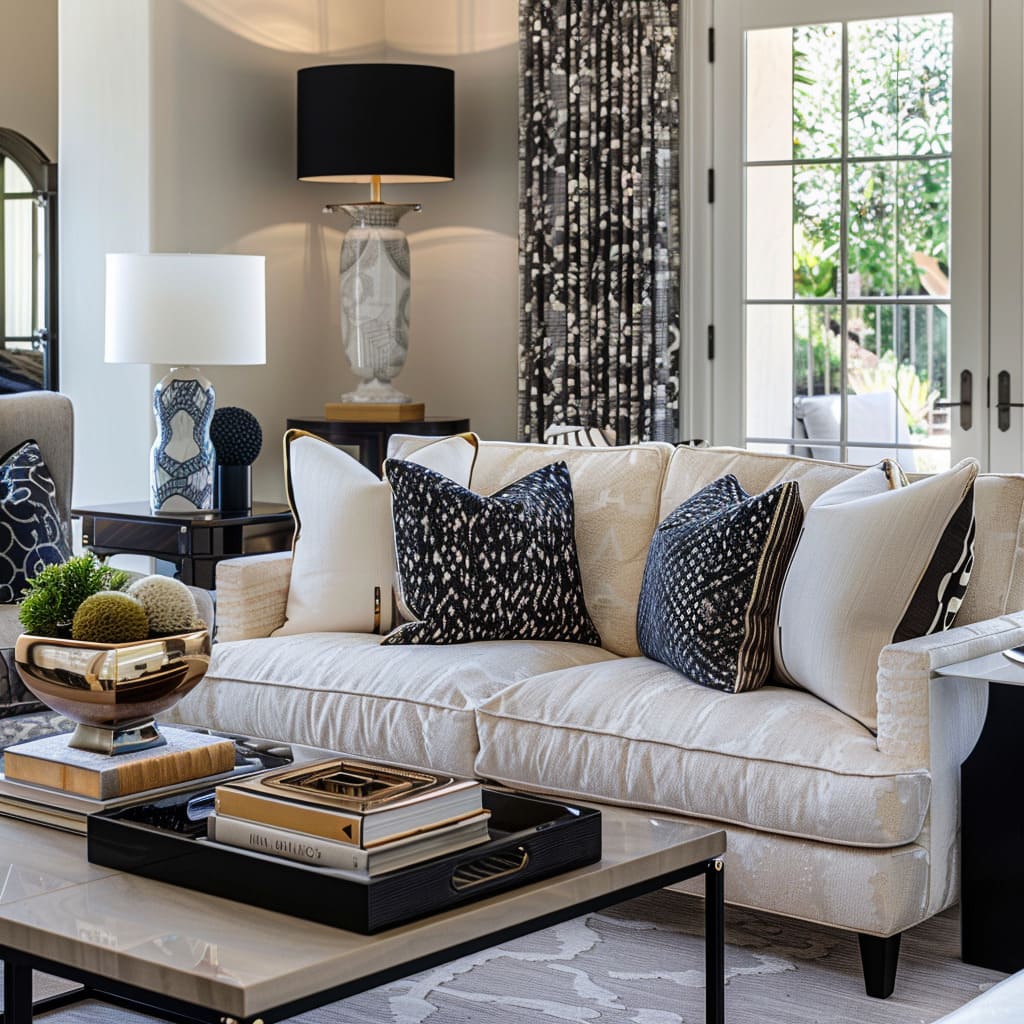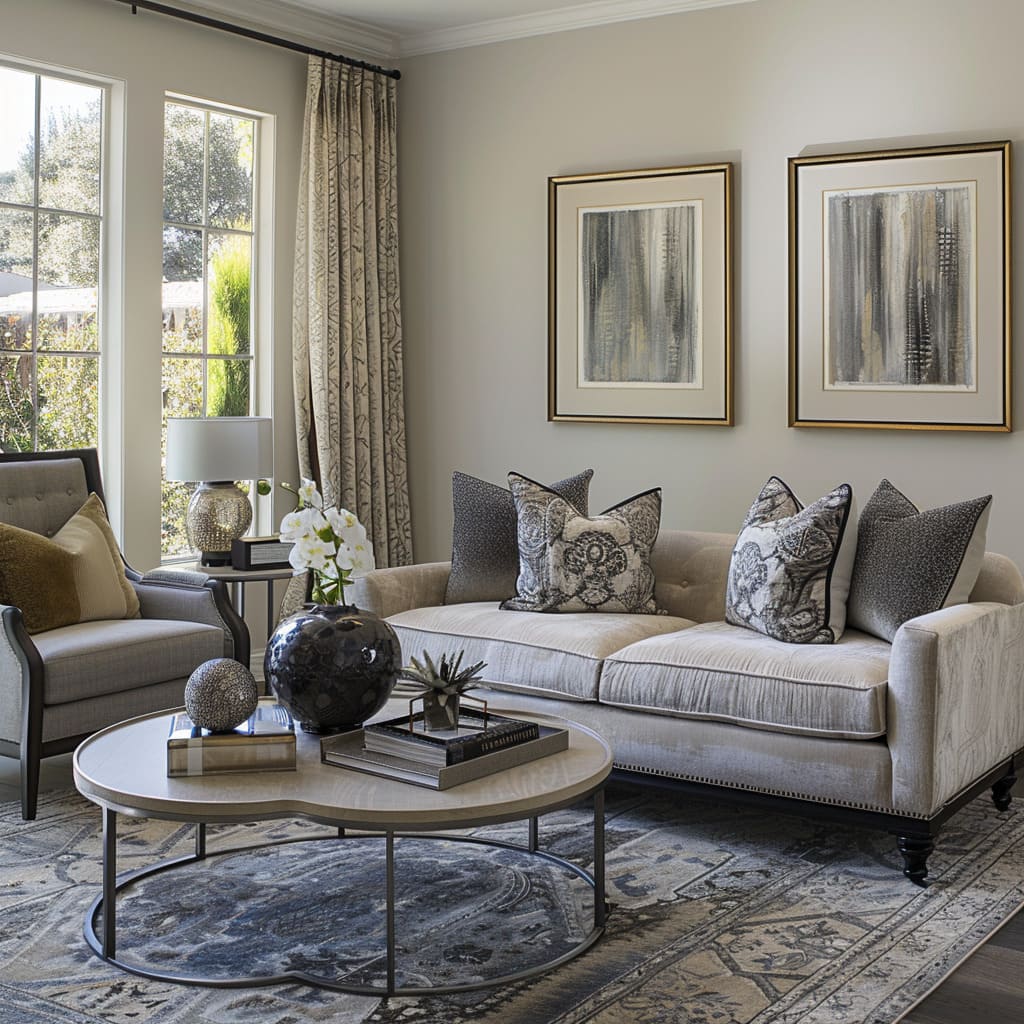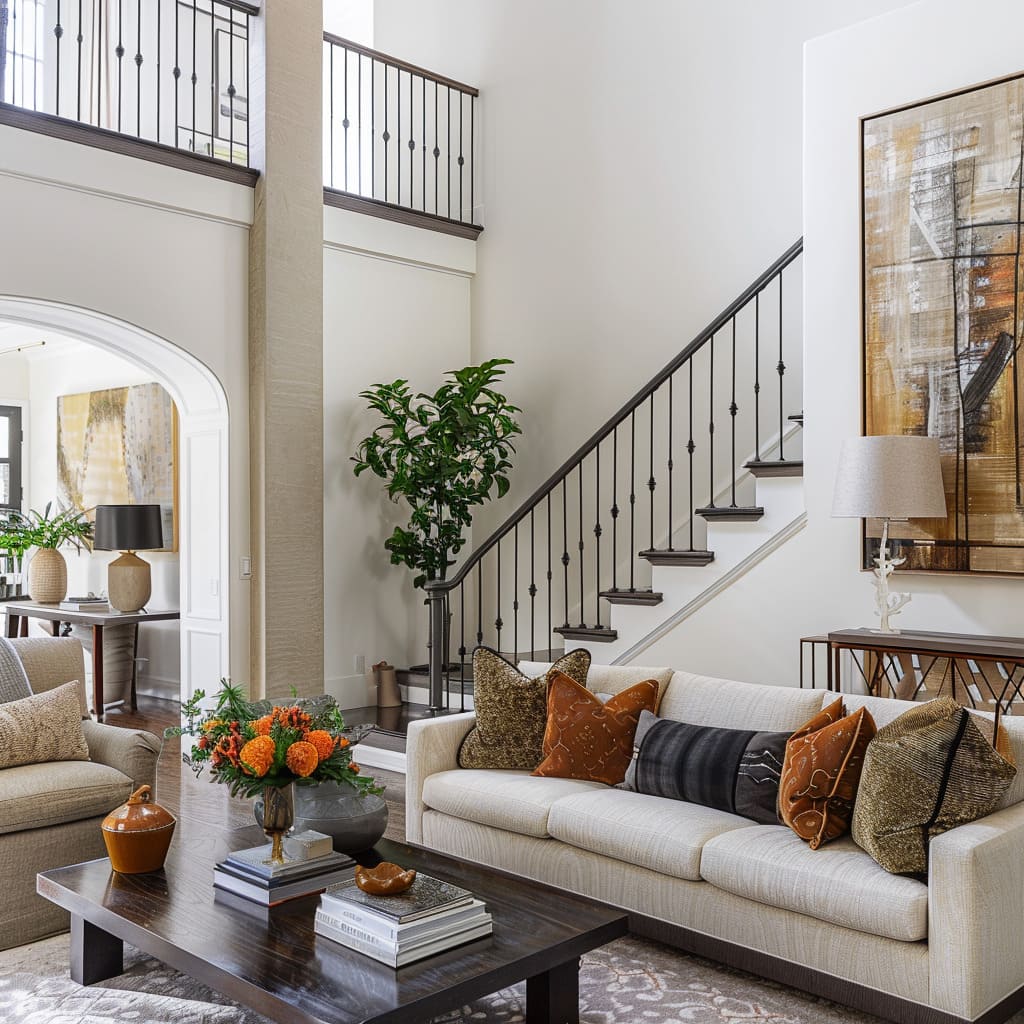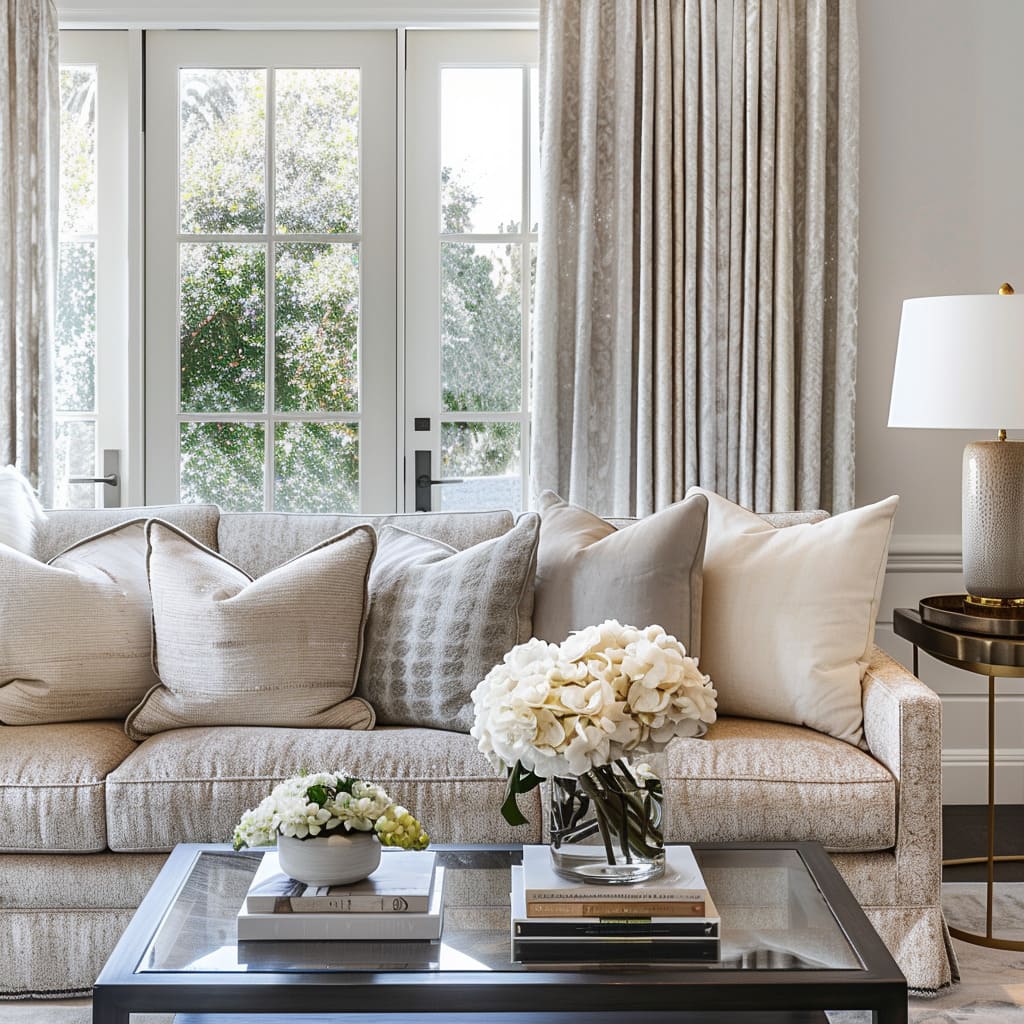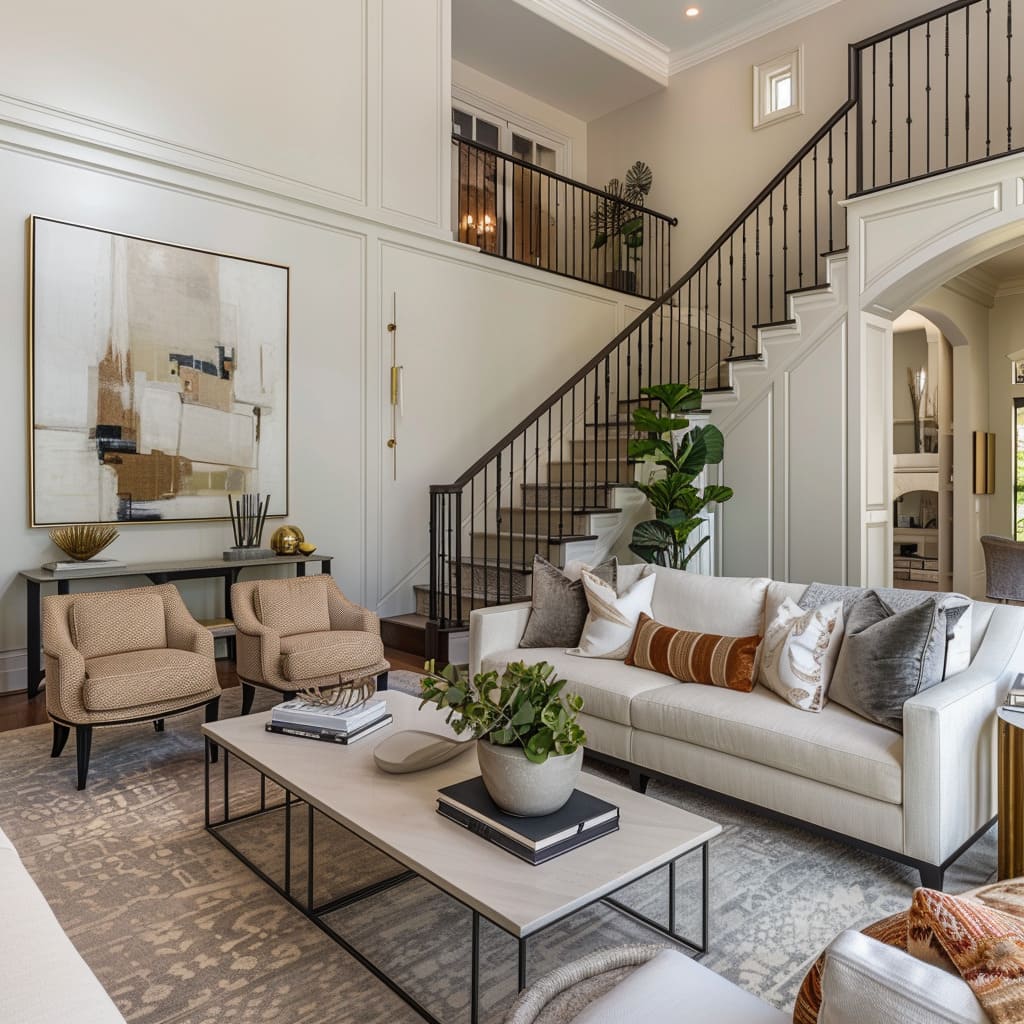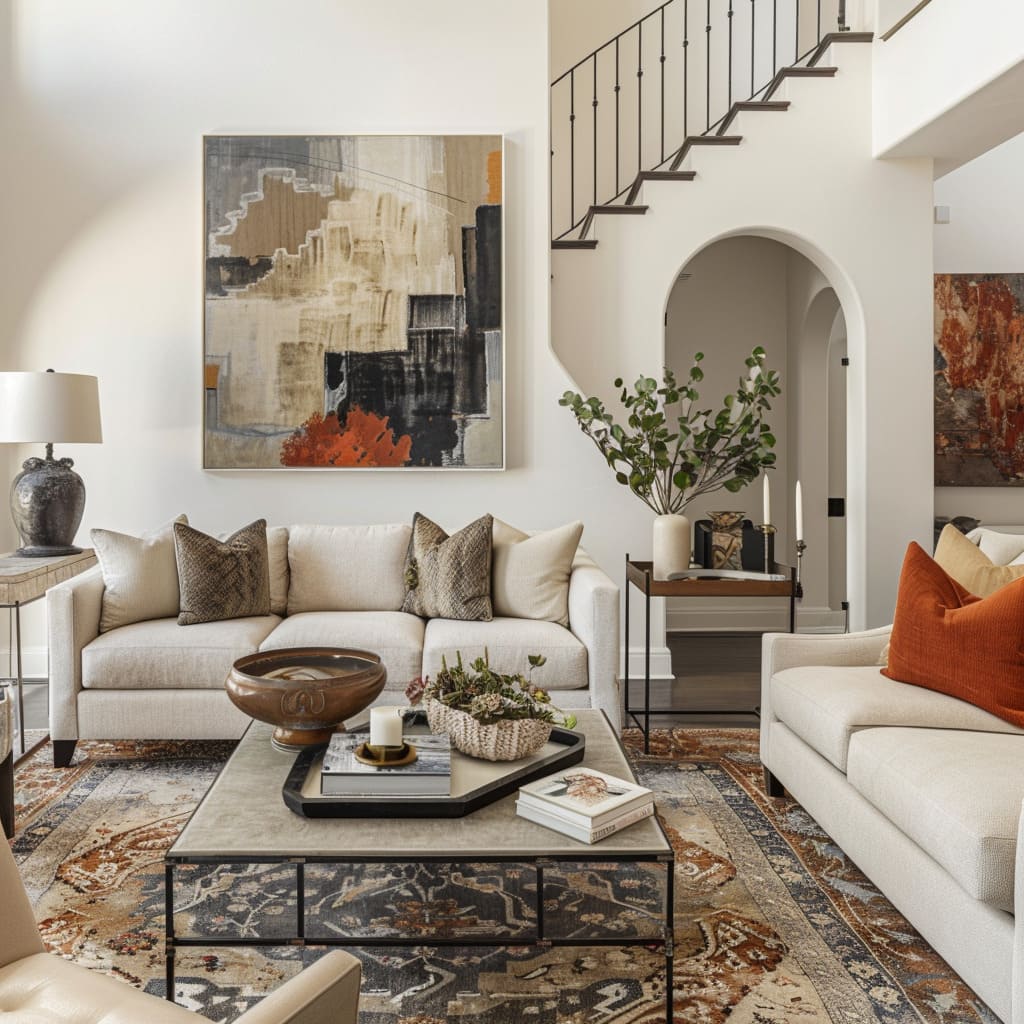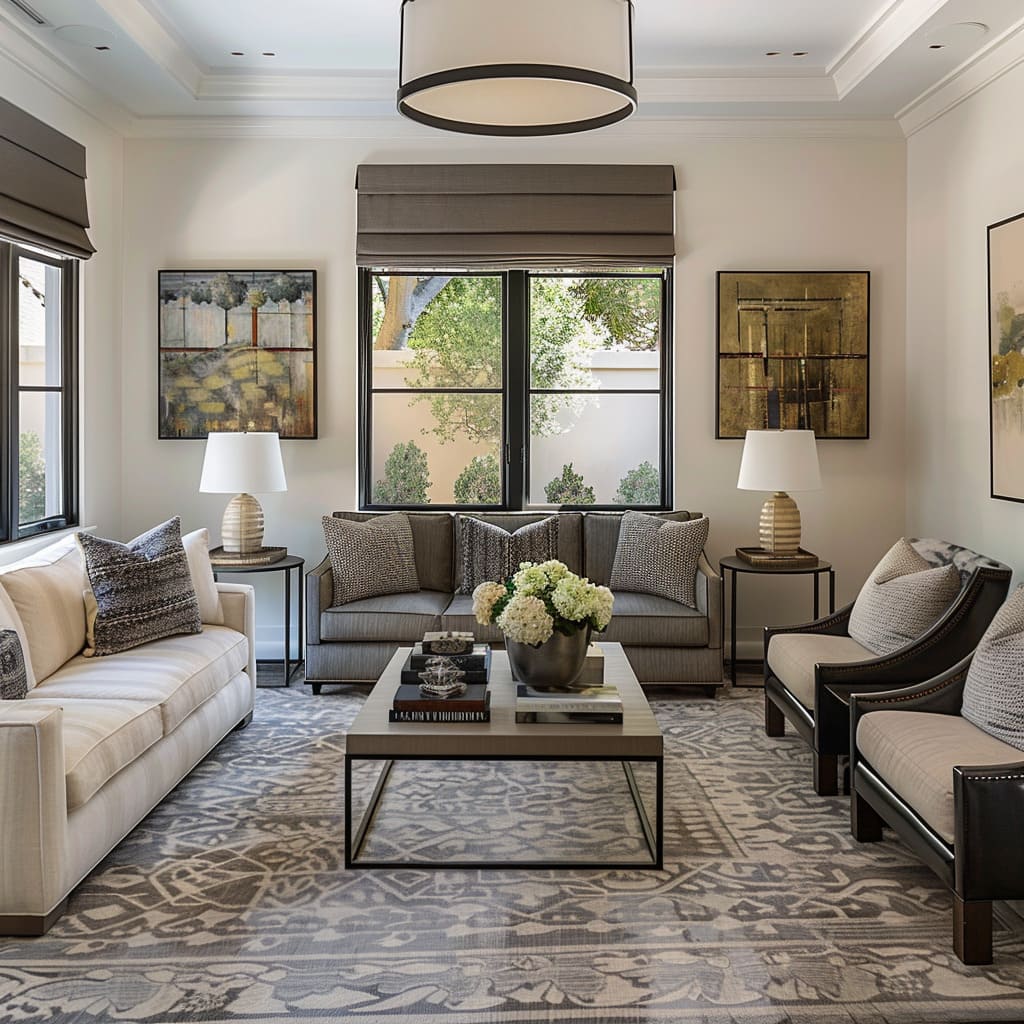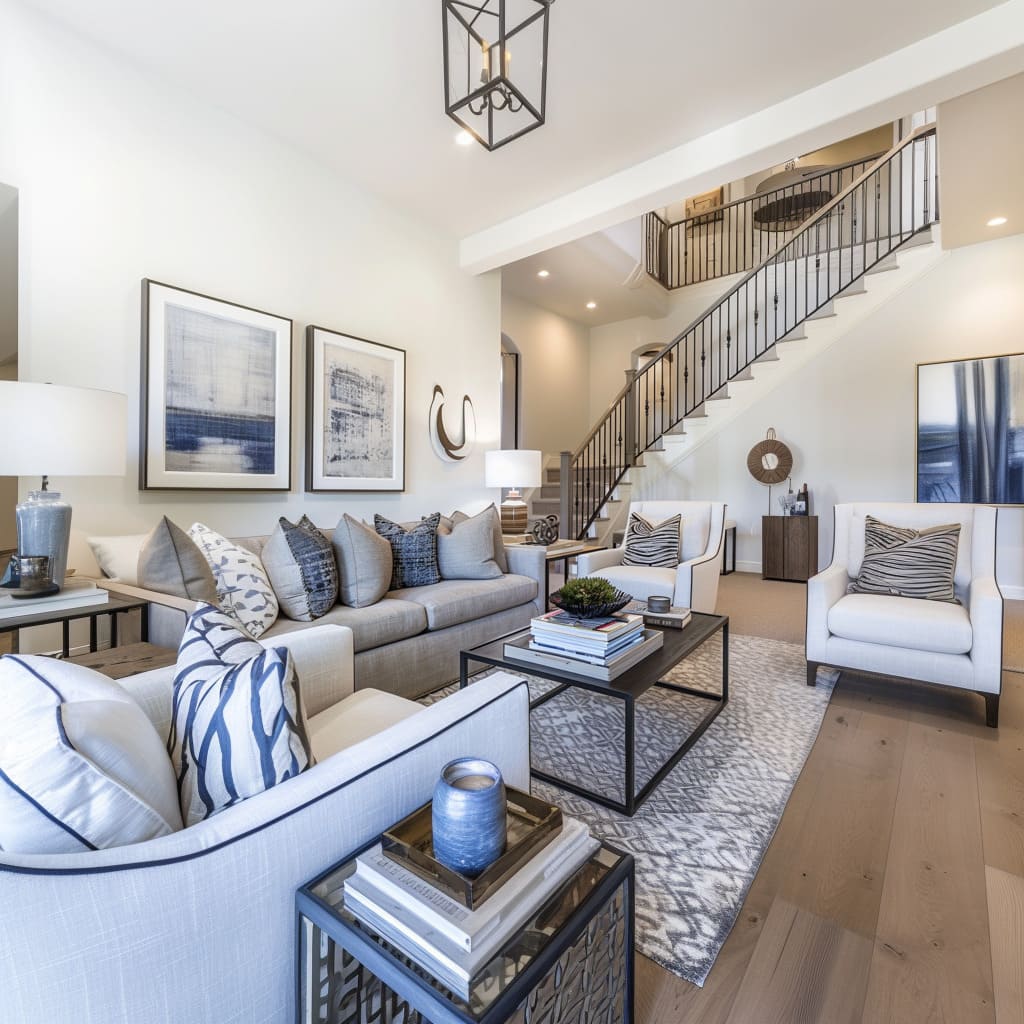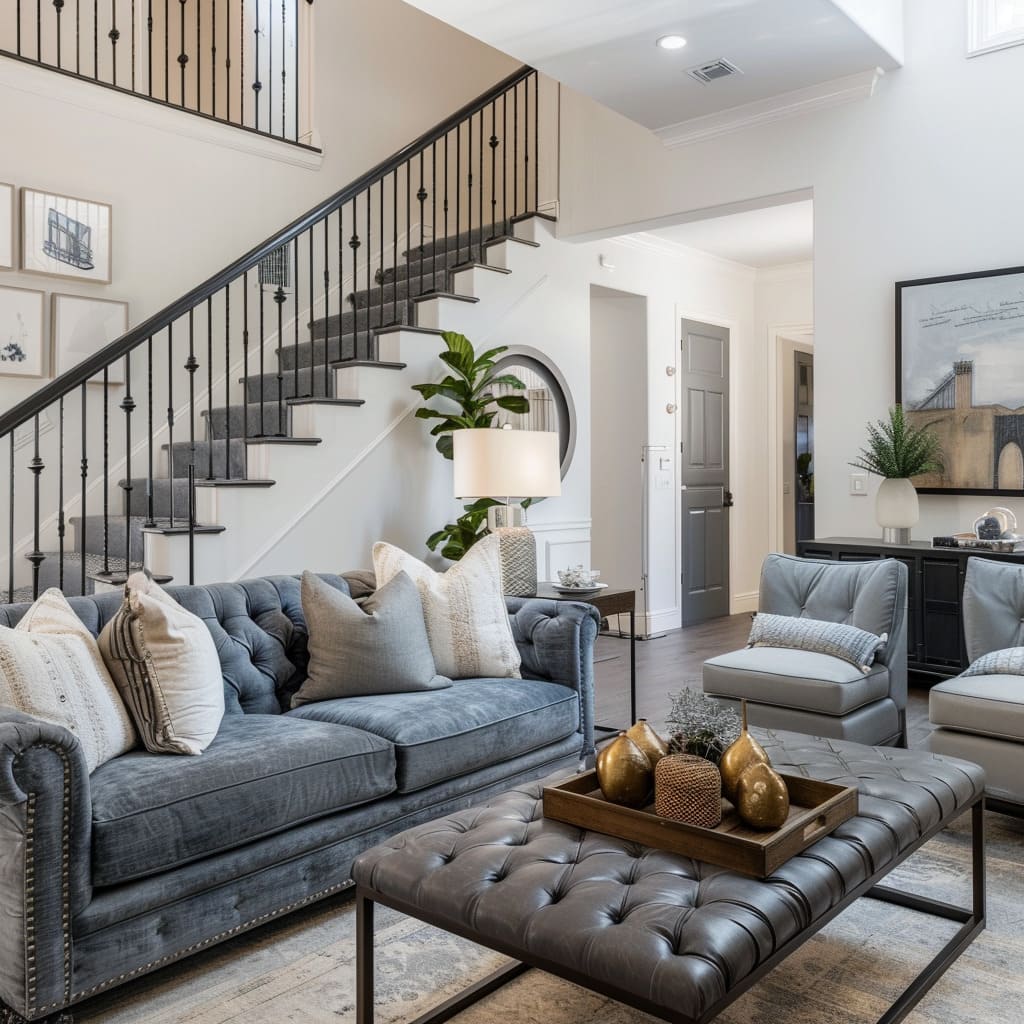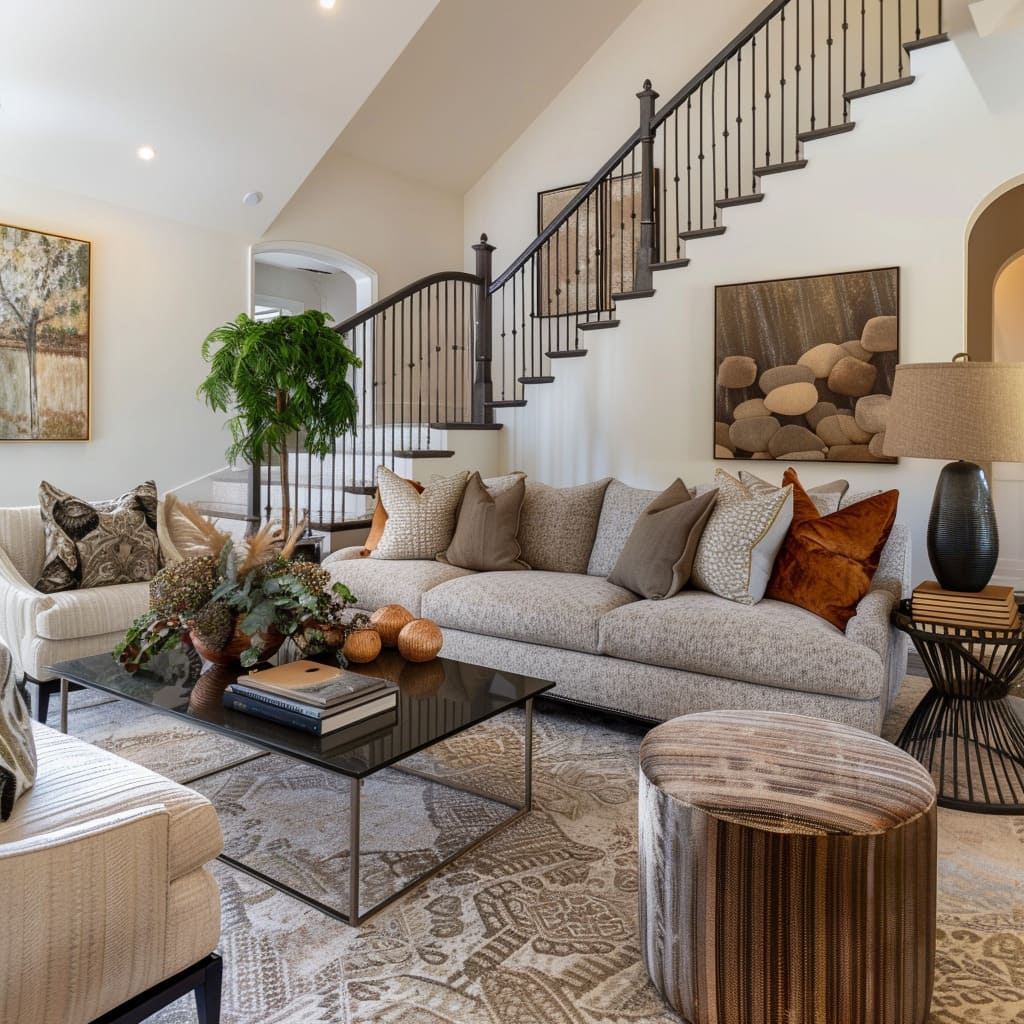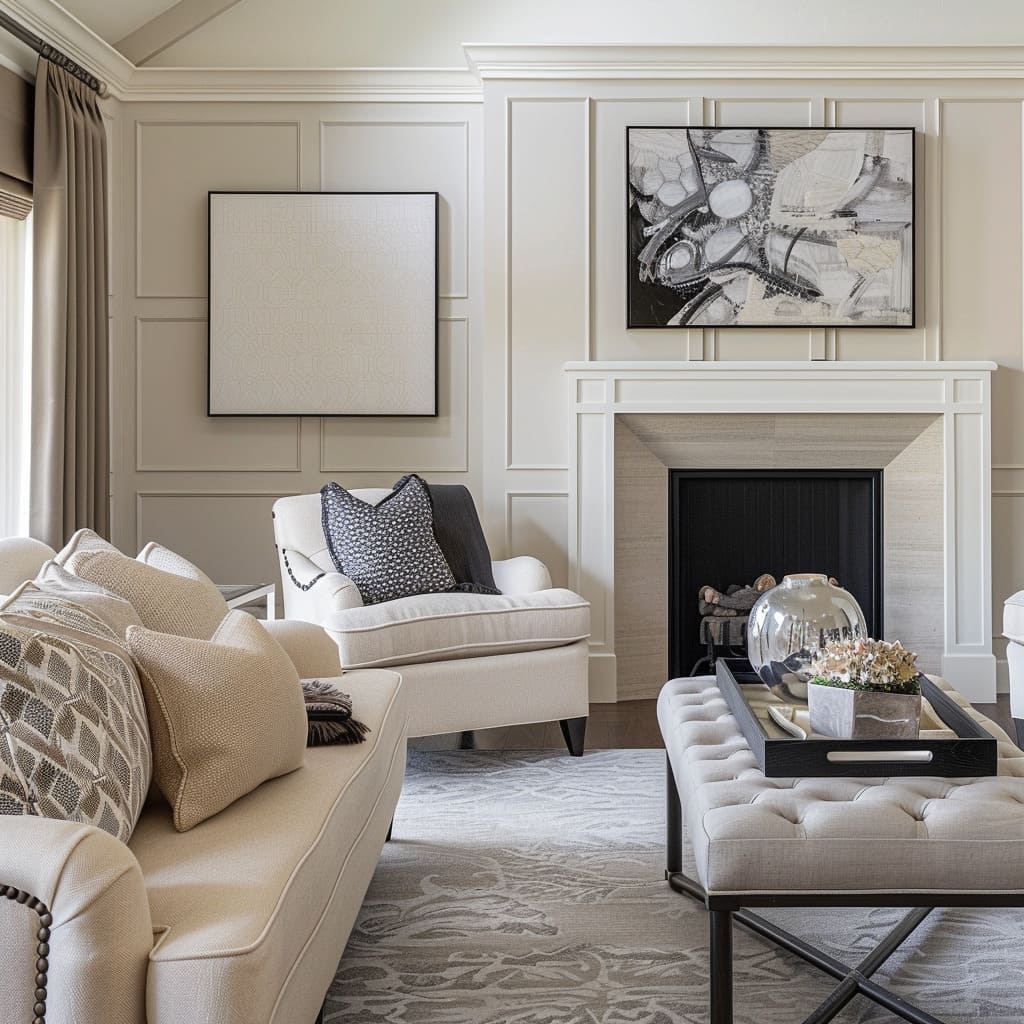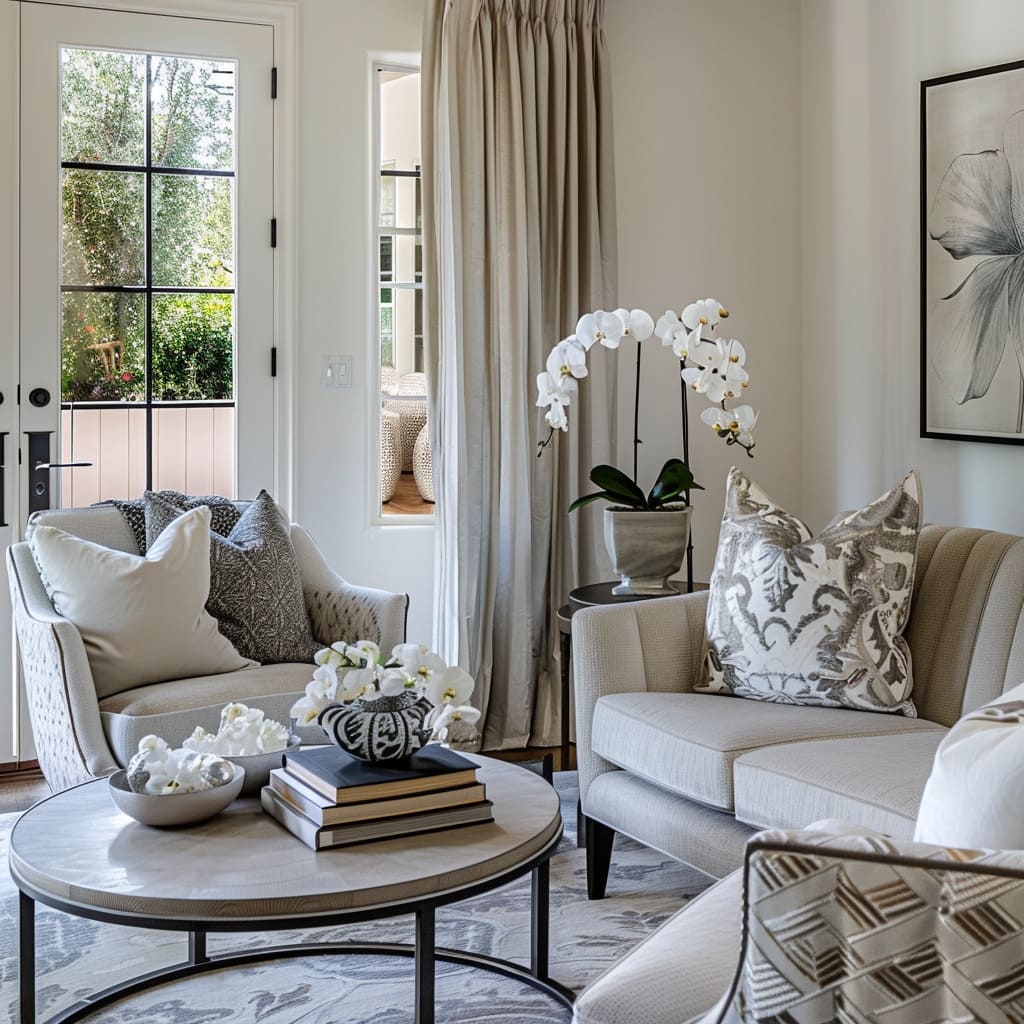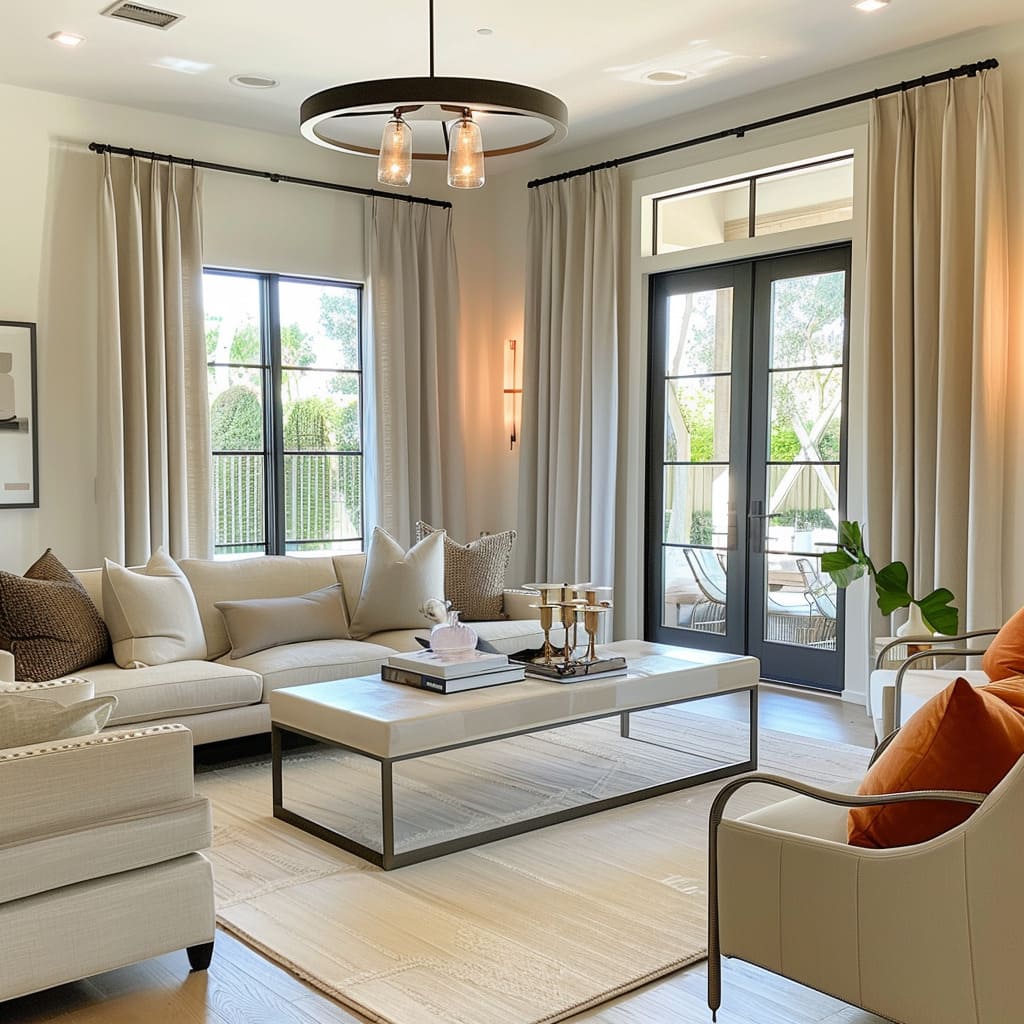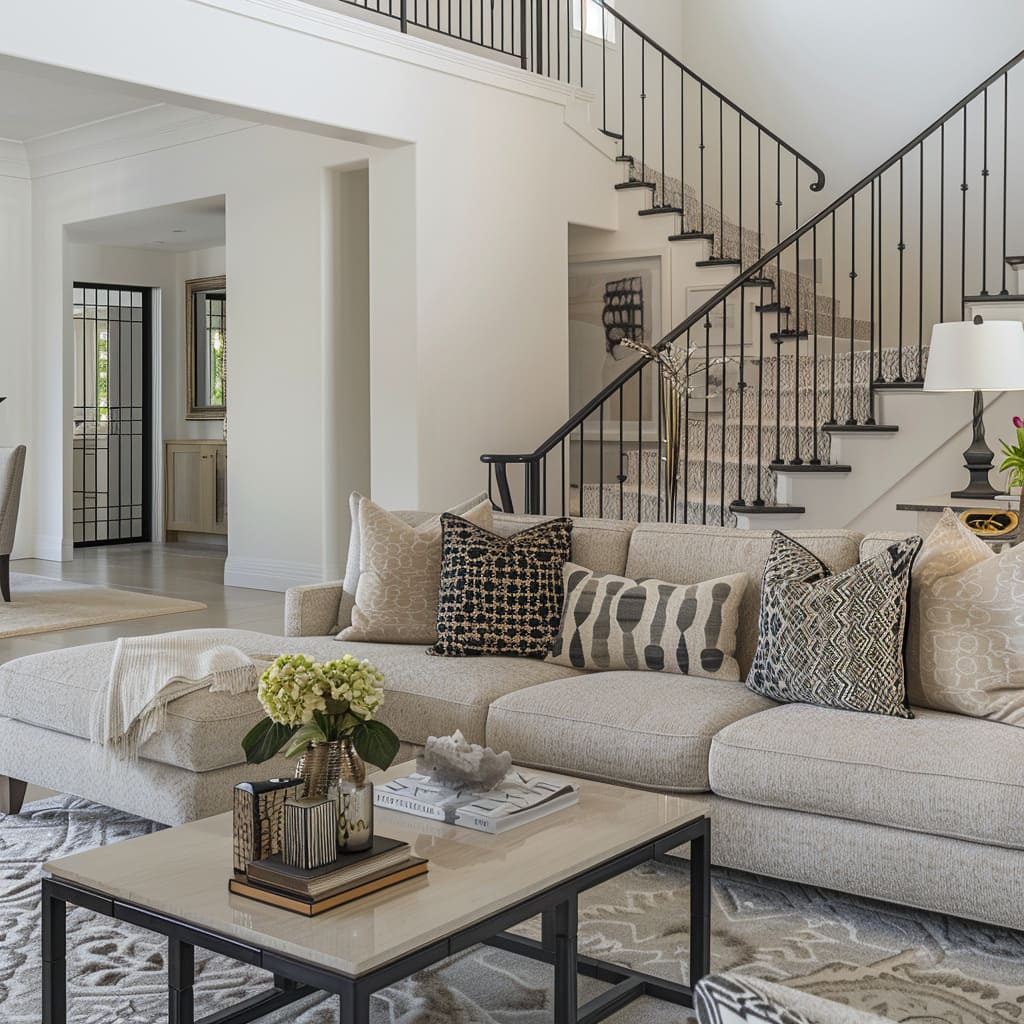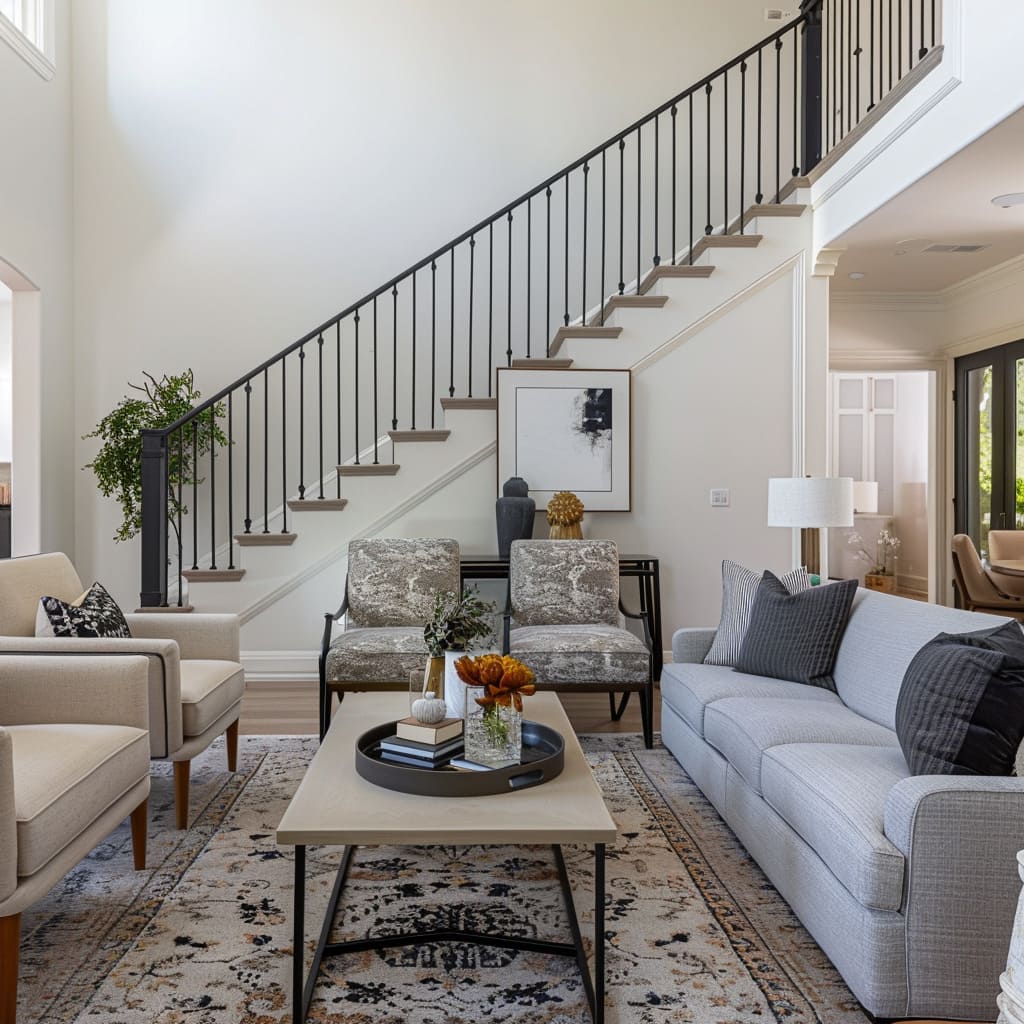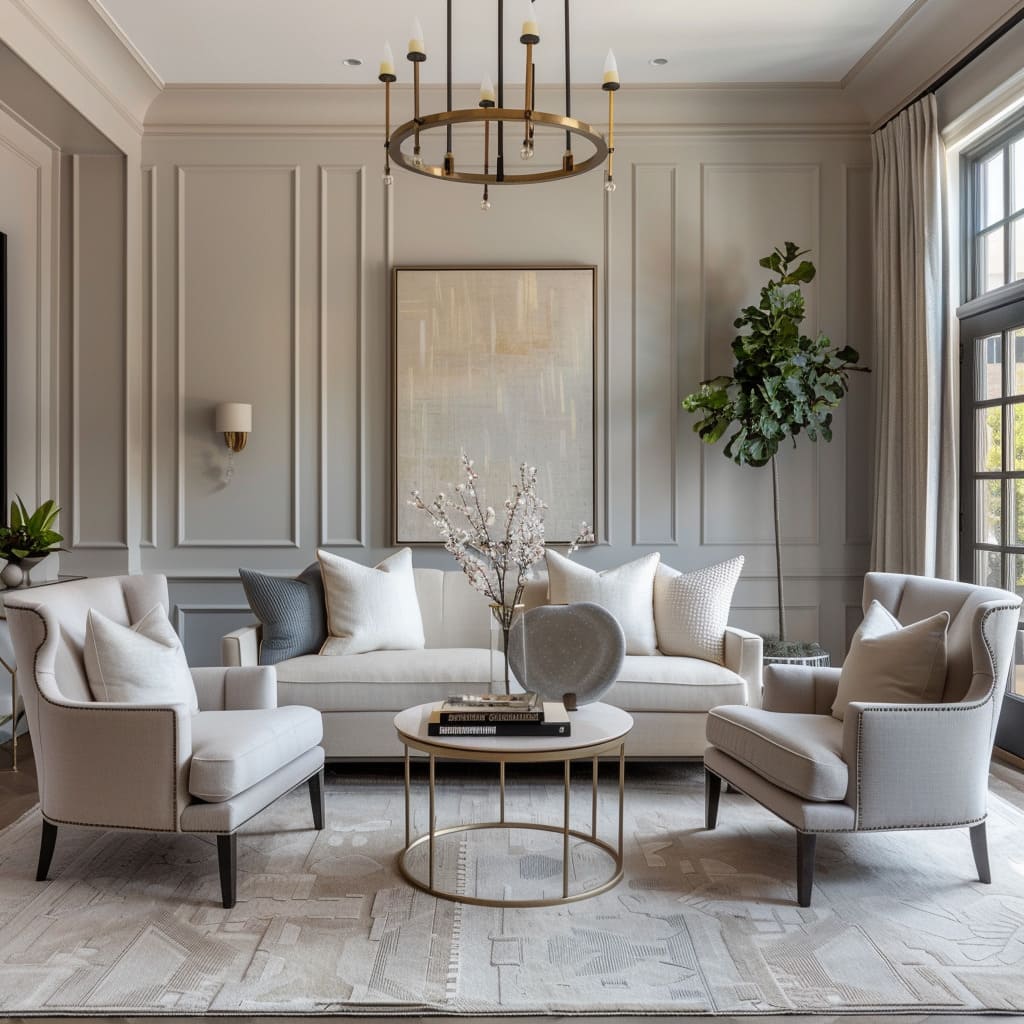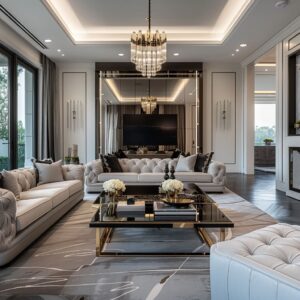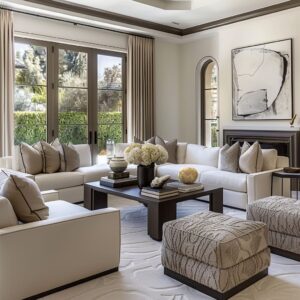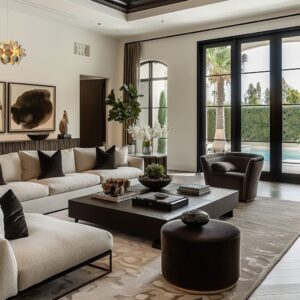Transitional style has become increasingly popular in interior design due to its ability to blend the best of both traditional and contemporary elements. This style offers a unique combination of the warmth and elegance found in classic designs with the clean lines and simplicity of modern aesthetics.
The result is a harmonious balance that is both sophisticated and inviting, making it an ideal choice for living rooms, where comfort and style are paramount.
Creating a transitional living room involves a thoughtful selection of furniture, colours, textiles, and decorative elements. Each piece and every detail must work together to achieve a cohesive look that feels timeless yet fresh.
Whether you are starting from scratch or looking to update your current living room, understanding the principles of transitional design can help you create a space that is both beautiful and functional. This article will explore various ideas and tips for designing and decorating a contemporary transitional living room, ensuring every aspect is covered to help you achieve the perfect look.
Furniture Selection
Sofa Choices
The sofa is often the centrepiece of a living room, and in a transitional style, it is typically upholstered in neutral tones such as light beige, cream, or grey. These colours provide a versatile foundation that can be easily complemented by other design elements.
Opt for sofas with subtle patterns and clean lines to maintain a modern yet timeless appeal. Plush cushions in shades of grey, white, or even soft pastels can add comfort and visual interest.
Armchairs and Accent Chairs
Matching armchairs on either side of the sofa can enhance the room’s symmetry and balance. These chairs should feature similar neutral upholstery and may include design details such as nailhead trim, which adds a touch of traditional craftsmanship to the modern setting.
Additionally, consider incorporating accent chairs with unique patterns or textures to introduce a focal point.
Tables
Coffee tables and side tables play a crucial role in a transitional living room. A coffee table with a marble top and a sleek metal frame, for example, provides a sophisticated surface for decorative items.
Side tables with matching finishes can help tie the room together. Ensure that these tables are both functional and stylish, offering space for lamps, books, and decorative objects.
Ottomans and Additional Seating
Ottomans and poufs are excellent additions for extra seating and style. They can be upholstered in the same neutral fabrics as the other furniture pieces or introduce a pop of color.
These versatile items can also serve as footrests or additional surfaces for trays and decor.
Color Schemes
Neutral Base
Transitional living rooms often start with a neutral base. Colors like beige, cream, grey, and taupe are commonly used on walls, large furniture pieces, and upholstery.
These shades create a calm and versatile backdrop that allows other design elements to shine without overwhelming the space.
Accent Colors
To add depth and character, incorporate accent colors such as navy blue, deep charcoal, or muted shades of green and brown. These accents can be found in cushions, throw pillows, rugs, and smaller furniture pieces.
The key is to use these colors sparingly to maintain balance and avoid overpowering the neutral base.
Natural and Warm Tones
Warm, natural tones like warm beige, caramel, and soft gold can create a cozy and welcoming atmosphere. These hues often appear in wooden furniture, decor items, and textiles, contributing to the overall warmth and inviting feel of the room.
Textured Neutrals
Incorporating textured neutrals is essential for adding dimension to the space. Fabrics with subtle patterns, such as herringbone, chevron, or delicate florals, can be used in upholstery and rugs.
These textures provide visual interest without disrupting the room’s calm and balanced aesthetic.
If you found our tips on creating a sophisticated and inviting living room helpful, don’t miss our comprehensive guide on transitional living room interior design. Discover more detailed recommendations and styling ideas.
Decorative Elements
Art and Accessories
Abstract and minimalist artworks are popular choices in transitional living rooms. These pieces should complement the room’s colour palette and add a touch of sophistication.
Decorative objects such as vases, bowls, and sculptures can enhance the room’s aesthetic. Place these items thoughtfully to avoid clutter and maintain a clean, organised look.
Lighting
Lighting is both functional and decorative in a transitional living room. Consider a statement chandelier with a circular design and gold finish for a focal point.
Table lamps with elegant bases and soft shades can provide ambient lighting. Ensure that the lighting fixtures enhance the room’s style and contribute to the overall atmosphere.
Plants and Greenery
Introducing natural elements with potted plants can bring life and freshness to the space. Tall, leafy plants placed near windows or in corners can create a vibrant focal point.
Smaller plants or floral arrangements on tables add a touch of nature and enhance the room’s aesthetic appeal.
Textiles and Finishes
Rugs
A large area rug in a neutral tone with a subtle pattern can anchor the room and add warmth. Choose a rug that complements the colour scheme and texture of the furniture.
This will help to create a cohesive look and provide a soft foundation underfoot.
Curtains and Drapes
Light grey or beige curtains frame the windows and enhance the natural light. Opt for fabrics that are luxurious yet understated, such as linen or silk blends.
These curtains can add a touch of elegance while maintaining the room’s bright and airy feel.
Upholstery
The upholstery in a transitional living room should be both durable and stylish. High-quality fabrics in neutral tones with subtle patterns can balance comfort and elegance.
Consider materials that are easy to maintain and can withstand everyday use while adding to the room’s sophisticated look.
Inspired by the blend of traditional and modern elements in your living room? Explore our visual tour of modern living room designs for more luxurious and contemporary decor ideas.
Architectural Features
Walls and Mouldings
Light grey or neutral walls provide a blank canvas for the room’s design elements. Classic wainscoting and mouldings add depth and sophistication without overwhelming the space.
These architectural details can enhance the transitional style by blending traditional craftsmanship with modern simplicity.
Ceilings
Subtle tray detailing on the ceiling adds architectural interest while maintaining a clean, open feel. This can be complemented by a statement light fixture, such as a chandelier, to draw the eye upward and create a sense of height.
Balanced Design Approach
Combining Traditional and Contemporary Elements
Achieving a harmonious blend of traditional and contemporary elements is key to transitional design. Use traditional furniture pieces with modern accents, or contemporary items with classic details.
This balance ensures that the room feels both timeless and fresh.
Creating an Inviting Atmosphere
To make the space feel cozy and welcoming, incorporate personal touches such as family photos, heirlooms, or favourite books. A cohesive design that reflects your personal style will make the room more inviting and comfortable.
Looking to extend the transitional style to other parts of your home? Check out our guide on designing practical and beautiful transitional bathrooms for more inspiration.
Conclusion
In summary, contemporary transitional living room design is about balancing traditional and modern elements to create a harmonious and inviting space.
By carefully selecting furniture, colors, textiles, and decorative elements, you can achieve a look that is both timeless and sophisticated.
Utilise the flexibility of transitional style to design a living room that is elegant, comfortable, and uniquely yours. Remember, the key to a successful transitional living room is achieving a balance that reflects your personal taste while maintaining a cohesive and refined look.


